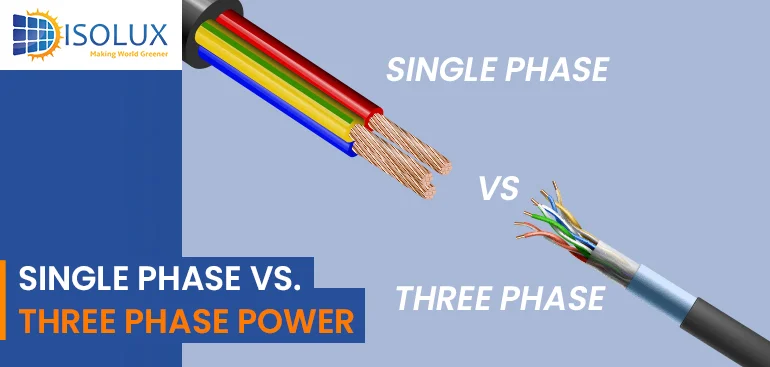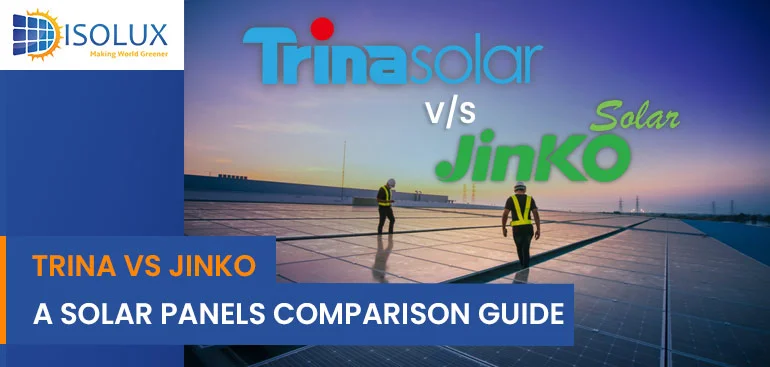When it comes to electrical power systems, understanding the difference between single-phase and three-phase power is crucial for both residential and commercial applications. This knowledge helps in making informed decisions about energy efficiency, cost savings, and system performance.
What is Single Phase Power?
Single-phase power, commonly used in residential settings, operates on a two-wire alternating current (AC) circuit. It consists of a single sine wave, delivering power through one phase wire and one neutral wire. The voltage typically found in single-phase power systems is 230V in Australia.
Key Features of Single Phase Power:
1. Simpler Wiring: Single-phase systems are simpler to wire, making them less expensive to install.
2. Limited Capacity: Suitable for smaller loads and residential applications such as lighting, heating, and small appliances.
3. Availability: Widely available in residential areas and small commercial setups.
What is Three Phase Power?
Three-phase power is commonly used in commercial and industrial settings. It operates on a three-wire AC circuit with three alternating currents, each set 120 degrees apart. This setup allows for a more consistent and reliable power supply, with the standard voltage in Australia being 400V.
Key Features of Three Phase Power:
1. Higher Capacity: Capable of handling larger loads and powering heavy machinery and equipment.
2. Efficiency: More efficient for transmitting power over long distances, reducing energy losses.
3. Balanced Load: Provides a balanced load, reducing the risk of overloading circuits.
Applications of Single Phase and Three Phase Power
Single Phase Power:
Residential Homes: Ideal for powering everyday household appliances, lighting, and heating systems.
Small Businesses: Suitable for small offices, shops, and businesses with minimal electrical demands.
Portable Equipment: Commonly used in portable generators and small power tools.
Three Phase Power:
Industrial Plants: Essential for running heavy machinery, industrial equipment, and large HVAC systems.
Large Commercial Buildings: Used in office buildings, shopping malls, and large retail stores.
Renewable Energy Systems: Often used in solar panel systems and wind turbines for efficient power generation and distribution.
If you’re looking to install a new Solar panel in Sydney, get in touch with Isolux Solar. We offer $0 Upfront installation with best price. Call on 1300 552 452 to get an obligation free quote.
Benefits of Single Phase Power
1. Cost-Effective: Cheaper to install and maintain due to simpler wiring and fewer components.
2. Accessibility: More widely available in residential areas, making it convenient for home use.
3. Adequate for Small Loads: Sufficient for everyday household appliances and small commercial needs.
Benefits of Three Phase Power
1. Higher Efficiency: More efficient in transmitting and distributing power, especially over long distances.
2. Greater Stability: Provides a consistent power supply with less fluctuation, ideal for sensitive equipment.
3. Scalability: Easily scalable to meet the increasing power demands of growing businesses and industrial setups.
4. Reduced Power Losses: Less power loss in transmission, resulting in better energy efficiency and lower operating costs.
Comparing Costs
When comparing single-phase and three-phase power, the cost is a significant factor. Single-phase systems are generally cheaper to install and maintain, making them ideal for residential and small business use. Three-phase systems, while more expensive upfront, offer long-term savings through improved efficiency and reliability, especially for businesses with higher power demands.
Efficiency and Performance
Three-phase power is inherently more efficient than single-phase power. The balanced load and higher capacity mean that three-phase systems can handle larger power loads with less energy loss. This efficiency translates to better performance for industrial applications and significant cost savings over time.
Choosing the Right Power System
For Residential Use:
Single Phase: Ideal for typical household needs, such as lighting, heating, and small appliances. It’s cost-effective and widely available.
For Commercial and Industrial Use:
Three Phase: Necessary for businesses that operate heavy machinery, industrial equipment, or have large electrical loads. It ensures a stable and efficient power supply, crucial for maintaining productivity and reducing downtime.
Conclusion
Understanding the differences between single-phase and three-phase power is essential for making informed decisions about your electrical needs. Single-phase power is suitable for residential and small commercial applications, offering simplicity and cost-effectiveness. In contrast, three-phase power is ideal for industrial and large commercial settings, providing higher efficiency, stability, and scalability. By considering your specific power requirements, usage, and budget, you can choose the right power system to ensure optimal performance and cost savings.
Read Next Blog:
What’s The Difference Between Kilowatts (kW) VS Kilowatt hours?




